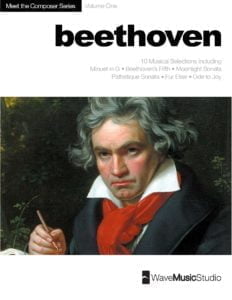Glenn Gould – Liszt Transcription of Ludwig van Beethoven – Symphony No. 7 – Allegretto
Browse in the Library:
Glenn Herbert Gould (25 September 1932 – 4 October 1982) was a Canadian pianist who became one of the best-known and most-celebrated classical pianists of the 20th century. He was renowned as an interpreter of the keyboard works of Johann Sebastian Bach. Gould’s playing was distinguished by a remarkable technical proficiency and a capacity to articulate the contrapuntal texture of Bach’s music.
Gould rejected most of the standard Romantic piano literature by Chopin, Liszt, and others, in favour of Bach and Beethoven mainly, along with some late-Romantic and modernist composers. Although his recordings were dominated by Bach and Beethoven, Gould’s repertoire was diverse, including works by Mozart, Haydn, and Brahms; pre-Baroque composers such as Jan Pieterszoon Sweelinck and Orlando Gibbons; and 20th-century composers including Paul Hindemith, Arnold Schoenberg, and Richard Strauss. Gould was known for his eccentricities, from his unorthodox musical interpretations and mannerisms at the keyboard to aspects of his lifestyle and behaviour. He stopped giving concerts at the age of 31 to concentrate on studio recording and other projects.
Gould was also a writer, broadcaster, composer and conductor. He was a prolific contributor to musical journals, in which he discussed music theory and outlined his musical philosophy. He performed on television and radio, and produced three musique concrète radio documentaries called the Solitude Trilogy, about isolated areas of Canada.
Ludwig van Beethoven (17 December 1770 – 26 March 1827) was a German composer and pianist; his music is amongst the most performed of the classical music repertoire, and he is one of the most admired composers in the history of Western music. His works span the transition from the classical period to the romantic era in classical music. His career has conventionally been divided into early, middle, and late periods. The “early” period in which he forged his craft is typically seen to last until 1802.
His “middle” period, sometimes characterised as “heroic”, showing an individual development from the “classical” styles of Joseph Haydn and Wolfgang Amadeus Mozart, covers the years 1802 to 1812, during which he increasingly suffered from deafness. In the “late” period from 1812 to his death in 1827, he extended his innovations in musical form and expression.
Beethoven was born in Bonn. His musical talent was obvious at an early age, and he was initially harshly and intensively taught by his father Johann van Beethoven. He was later taught by the composer and conductor Christian Gottlob Neefe, under whose tuition he published his first work, a set of keyboard variations, in 1783. He found relief from a dysfunctional home life with the family of Helene von Breuning, whose children he loved, befriended, and taught piano.
At age 21, he moved to Vienna, which subsequently became his base, and studied composition with Haydn. Beethoven then gained a reputation as a virtuoso pianist, and he was soon courted by Karl Alois, Prince Lichnowsky for compositions, which resulted in his three Opus 1 piano trios (the earliest works to which he accorded an opus number) in 1795.
His first major orchestral work, the First Symphony, appeared in 1800, and his first set of string quartets was published in 1801. During this period, his hearing began to deteriorate, but he continued to conduct, premiering his Third and Fifth Symphonies in 1804 and 1808, respectively. His Violin Concerto appeared in 1806.
His last piano concerto (No. 5, Op. 73, known as the ‘Emperor’), dedicated to his frequent patron Archduke Rudolf of Austria, was premiered in 1810, but not with Beethoven as soloist. He was almost completely deaf by 1814, and he then gave up performing and appearing in public. He described his problems with health and his unfulfilled personal life in two letters, his “Heiligenstadt Testament” (1802) to his brothers and his unsent love letter to an unknown “Immortal Beloved” (1812).
In the years from 1810, increasingly less socially involved, Beethoven composed many of his most admired works including his later symphonies and his mature chamber music and piano sonatas. His only opera, Fidelio, which had been first performed in 1805, was revised to its final version in 1814. He composed his Missa Solemnis in the years 1819–1823, and his final, Ninth, Symphony, one of the first examples of a choral symphony, in 1822–1824.
Written in his last years, his late string quartets of 1825–26 are amongst his final achievements. After some months of bedridden illness he died in 1827. Beethoven’s works remain mainstays of the classical music repertoire.

